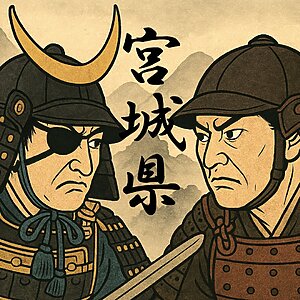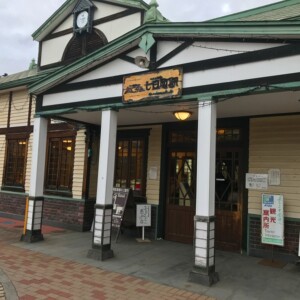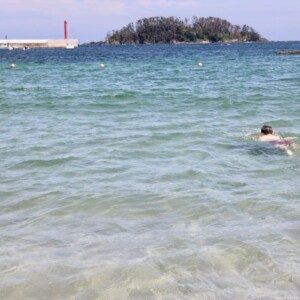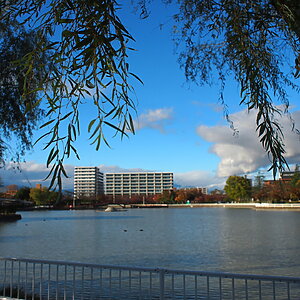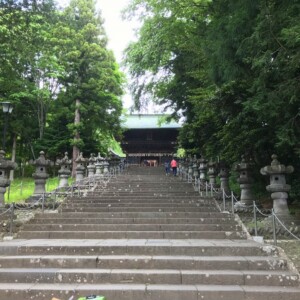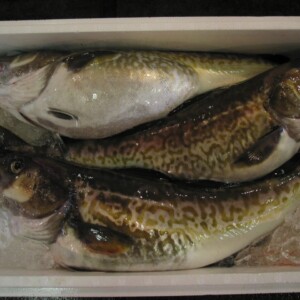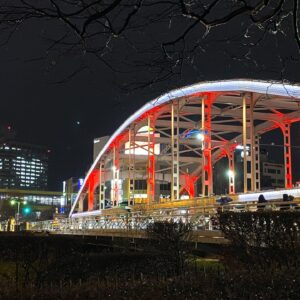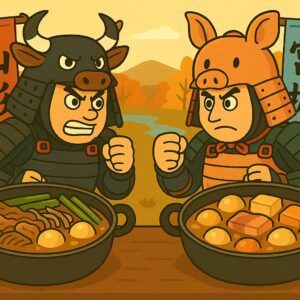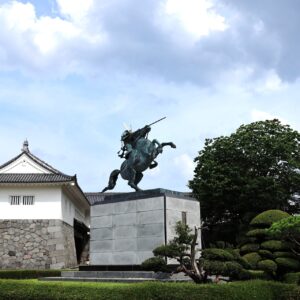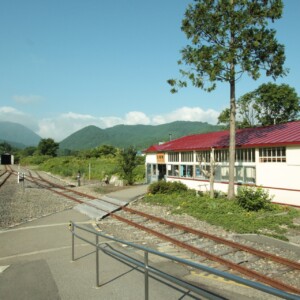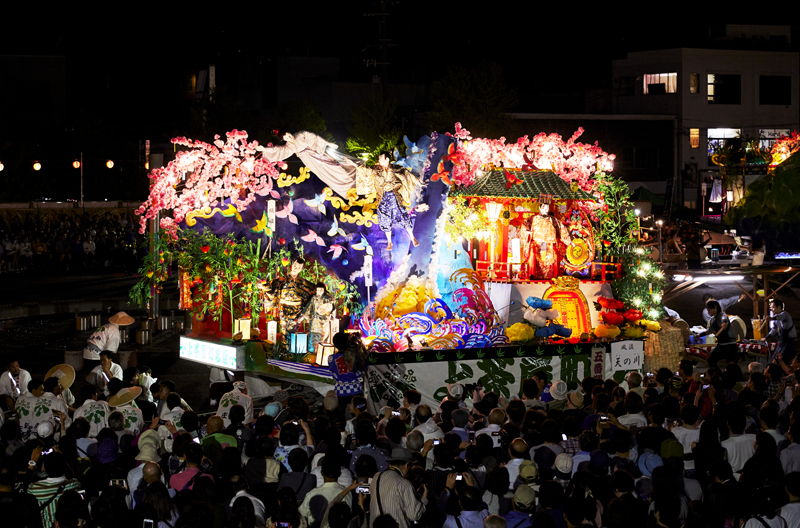
[Shinjo City, Yamagata Prefecture] Shinjo Festival, an Important Intangible Folk Cultural Property, said to be the largest parade of floats in Japan
table of contents
- 1 A festival started by the lord of Shinjo Domain to encourage his people
- 2 20 gorgeous floats parade through the city
- 3 Each town chooses a theme and the citizens decorate the floats
- 4 Mogami Park (Shinjo Castle ruins), the base for the Shinjo Festival
- 5 Hagino Shishiodori and Nitayama Shishiodori are indispensable to the Shinjo Festival
The Shinjo Festival is a three-day summer festival held every year from August 24th to 26th in Shinjo City, a former castle town in northern Yamagata Prefecture. Known as "Japan's No. 1 float procession," the festival features gorgeous floats parading through the city, attracting over 500,000 tourists.
A festival started by the lord of Shinjo Domain to encourage his people
The Shinjo Festival is said to have originated in 1756 (the 6th year of the Horeki era) during the mid-Edo period, when Tozawa Masanobu, the fifth lord of the Shinjo domain, held a festival throughout his domain to cheer up the people of his domain who were devastated by a severe crop failure caused by cold weather.The festival at that time was not as grand as it is today, and was based on the festival of Tenmangu Shrine, the guardian deity of the Tozawa family, with floats brought from private homes and decorated.

20 gorgeous floats parade through the city
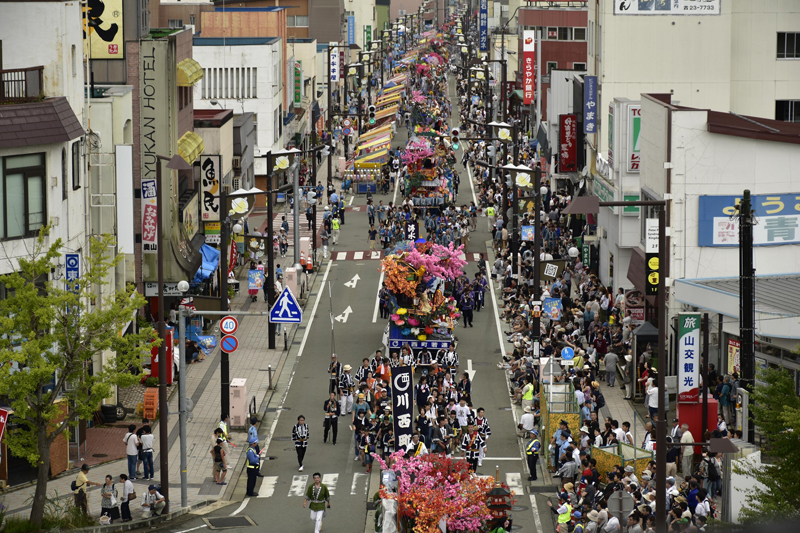
The Shinjo Festival took on its current form in the Showa era, and features a series of historical events reminiscent of the feudal domain era, such as the Mikoshi Procession, in which 200 people dressed as samurai and priests parade along with 20 floats and portable shrines, as well as the elegant Haginoshishi Dance and Nitayamashishi Dance, which are performed in Mogami Park, the site of Shinjo Castle. Festival music echoes throughout the city during the festival
The Shinjo Festival is a nationally designated Important Intangible Folk Cultural Property and a UNESCO Intangible Cultural Heritage site for its "Yama, Hoko and Yatai Festivals."
"Shinjo Festival" Schedule
August 24th "Evening Festival"
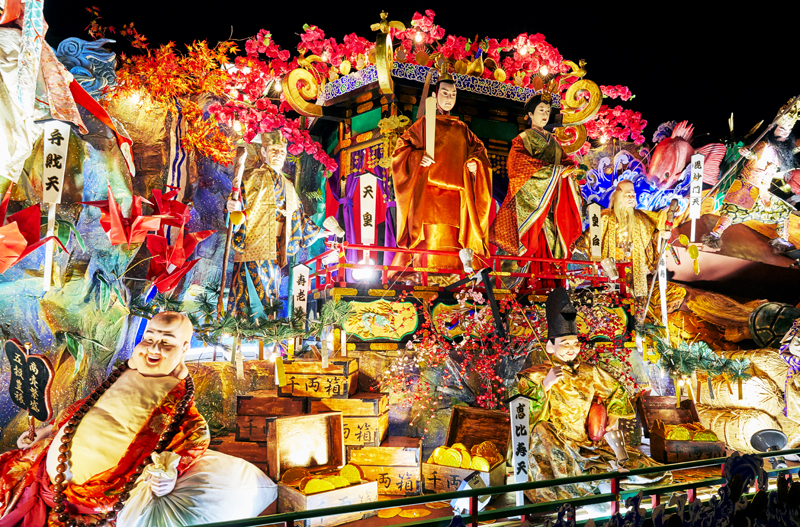
The Shinjo Festival will kick off at 8:30 a.m. on the 24th with the dedication of Shinjo Bayashi music at Tozawa Shrine, Gokoku Shrine, and Tenmangu Shrine (Tenmangu Shrine) in Mogami Park, Shinjo Castle Ruins. The annual Tozawa Shrine festival will then begin at around 10 p.m., and the evening festival will begin at 6 p.m. with the lighting ceremony.
At 7pm, the floats stored in each neighborhood are pulled by children and set into motion. The floats, already gorgeous even in the daytime, are lit up and become even more gorgeous. The fantastical floats, woven together with light and shadow, are truly a sight to behold. After cruising through the city, the floats finally gather at Shinjo Station Square, bringing the evening festival to a close
August 25th [Main Festival]
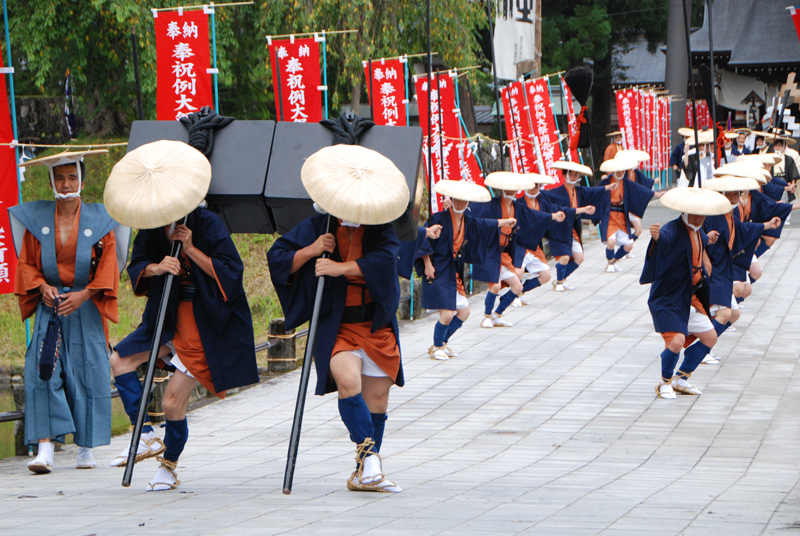
The festival begins at around 9:00 AM on the 25th with a Shinto ritual at Tenmangu Shrine, where the deity is transferred to a portable shrine. Afterwards, a portable shrine procession of around 200 parishioners dressed in the attire of samurai, foot soldiers, and priests gather at Tozawa Shrine and depart the shrine. There are plenty of things to see, such as the foot soldiers' unique gait and the acrobatics performed during the procession. An hour after the procession departs, the float procession begins.
August 26th [After Festival]
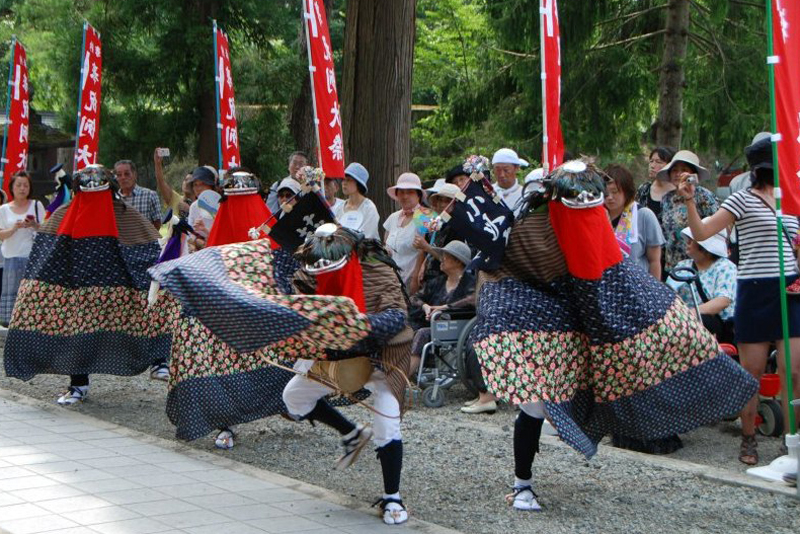
In the afternoon, all 20 floats will be gathered in the city center for a display of decorated floats, and the Shishiodori dance will be performed throughout the town at Minami Honmachi Crossroads
The Shinjo Festival will conclude with a hand-clapping ceremony at around 5:00 p.m
Each town chooses a theme and the citizens decorate the floats
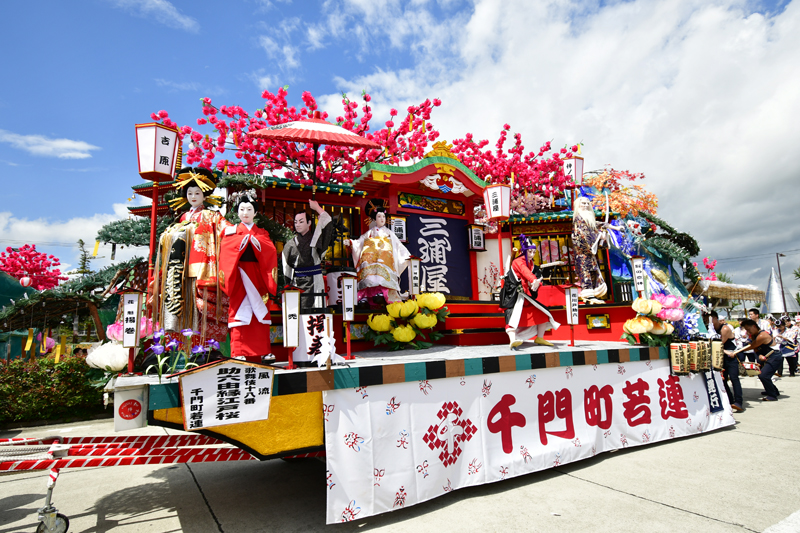
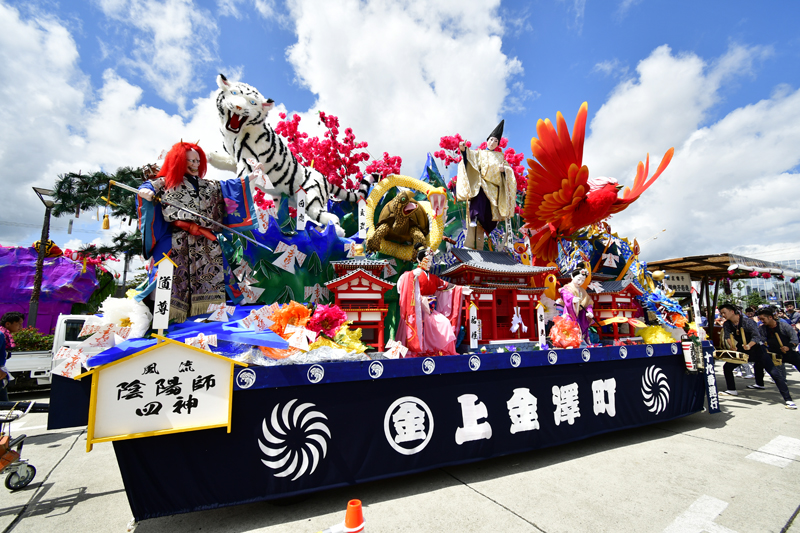
The highlight of the Shinjo Festival are the 20 floats, each with its own town-wide organization called Wakaren, which creates one float per town. The decorations are based on historical tales, legends, Noh, Kabuki, and more, and typically feature life-size dolls surrounded by landscapes, buildings, flowers, and waterfalls. At Aomori's Nebuta Festival, professionals known as "Nebuta-shi" are involved in the construction of the floats, but at the Shinjo Festival, it is not professionals who come together after their own work has finished and spend a month or so decorating the floats.
Mogami Park (Shinjo Castle ruins), the base for the Shinjo Festival
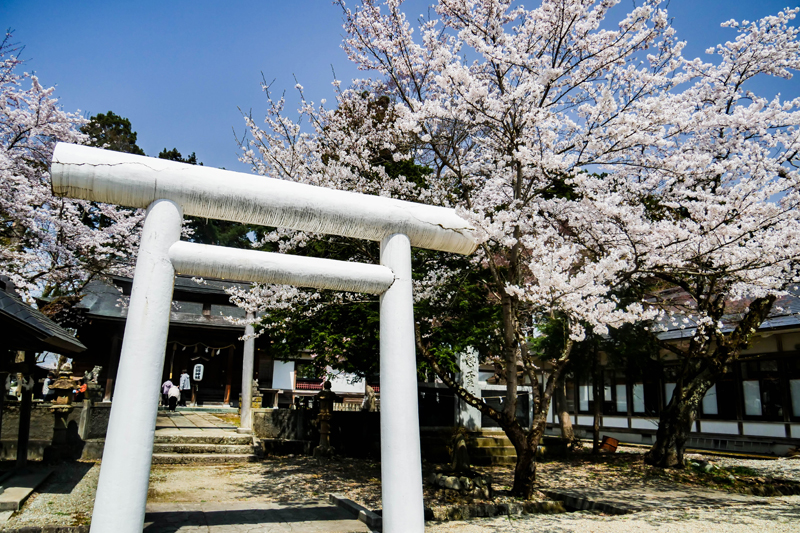
Mogami Park was developed as a park on the site of Shinjo Castle, which was built in 1625 by Tozawa Masamori, the first lord of the Shinjo domain, and is home to Tozawa Shrine, Tenman Shrine, and Gokoku Shrine
The Shinjo Castle tower was destroyed in a fire in 1636 and was never rebuilt. The Tozawa clan lived here for 243 years until the Meiji era, but it was completely burned down during the Boshin War that broke out in the early Meiji era
There are none left now
Tenmangu Shrine, the guardian deity of the Tozawa family, lords of the Shinjo domain
Tenmangu Shrine is a shrine that has been worshipped as the guardian deity of the Tozawa clan for generations. The building was built in 1628 by the first feudal lord, Masamori, and is said to have been rebuilt in 1668 by the second feudal lord, Masanobu. The main hall and worship hall of Tenmangu Shrine are designated tangible cultural properties by Yamagata Prefecture
Honoring the achievements of the Tozawa family [Tozawa Shrine]
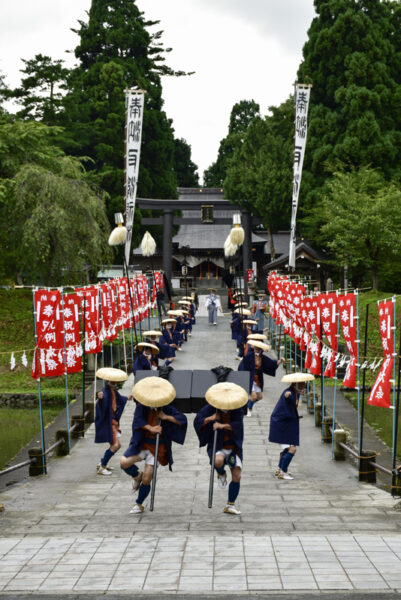
Tozawa Shrine was founded in 1894 (Meiji 27) and enshrines Hiramori, the founder of the Tozawa family, Masamori, the clan's founder, and Masazane, the 11th and final clan lord. During the Boshin War, the Tozawa clan, which belonged to the new government forces, was attacked and captured by the Shonai clan, which was part of the former shogunate forces. After the former shogunate forces were defeated by the new government forces, Masazane was appointed governor of Shinjo Prefecture
Memorial service for those who died in battles since the Boshin War [Gokoku Shrine]
Gokoku Shrine was founded by Tozawa Masazane in 1869 (Meiji 2) as a shrine to commemorate those who died in the Boshin War. It was moved to the site of Shinjo Castle in 1891 (Meiji 24), where it remains to this day
Hagino Shishiodori and Nitayama Shishiodori are indispensable to the Shinjo Festival
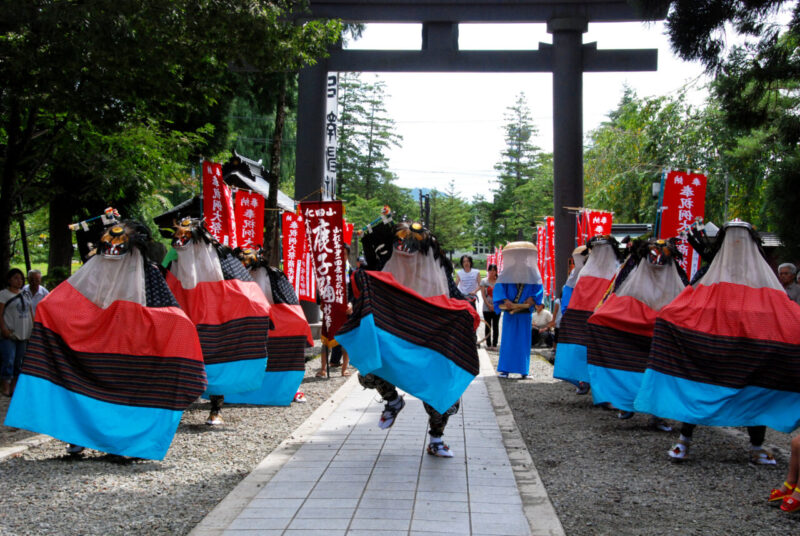
It is a folk performing art that has been passed down since ancient times in the Ogino and Nitayama settlements of Shinjo City, and the details of its origins are unknown. However, it seems that Shishiodori existed outside of Ogino and Nitayama, as there is a record that Mogami Yoshimitsu gathered Shishiodori people from within his domain and had them perform it. There is also a record that Yoshimitsu saw a dance that appeared to be the Ogino Shishiodori and exclaimed that it was "the best," so it is estimated that it has been around for at least 360 years
Shishiodori is a dance performed with a headpiece shaped like a deer's head (kashira) on the head and cloth draped around the body, and there are many different types of Shishiodori with different headpieces and choreography all over the country. The Shishiodori danced at the Shinjo Festival uses a headpiece modeled after a chamois , making it a very rare Shishiodori dance even nationwide. The Hagino Shishiodori and Nitayama Shishiodori have been designated as Yamagata Prefecture Intangible Folk Cultural Properties.
Shinjo Festival <Information>
- Location: Shinjo City, Yamagata Prefecture
- Phone number: 0233-22-6855 (Shinjo Festival Executive Committee)
- Dates: August 24th, 25th, and 26th
- Access: By car: Approximately 5 minutes from Shinjo IC on the Tohoku Chuo Expressway. By train: Get off at Shinjo Station on the Yamagata Shinkansen. *We recommend using public transportation on the day of the Shinjo Festival
- URL: Shinjo Festival



![[Recommended Autumn Festivals: Yamagata Edition] Enjoy Yamagata's delicious autumn festival! 28_Shinjo Festival 1](https://jp.neft.asia/wp-content/uploads/2024/08/6ddf3aad6f42cace23ad41df9274d5da-150x150.jpg)
![[Shinjo City, Yamagata Prefecture] Is Kadoyaki...a delicious fish that heralds spring in Yamagata? herring](https://jp.neft.asia/wp-content/uploads/2023/04/23777231_m-150x150.jpg)
![Yurihonjo City, where Honjo, Kameda and Yajima domains were intersected between the Kubota and Shonai domains [Akita Prefecture] FF2C8AAA4350E7E179F97F97B38B3A2302F-1](https://jp.neft.asia/wp-content/uploads/2024/04/ff2c8aaa4350e7e179f97f38b3a2302f-1-150x150.jpg)
